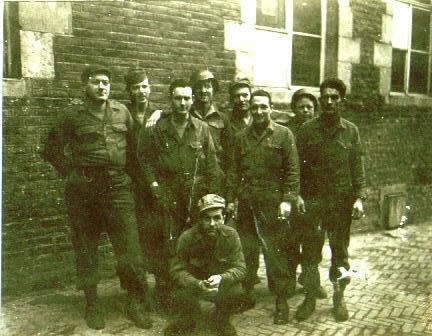187th Engineer Combat Battalion Rhine River Crossing March 24, 1945.
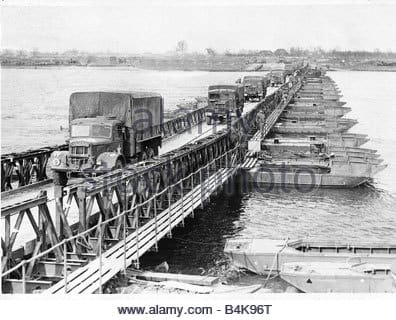
There is always one more river to cross, always just one more. Then when that one's spanned there is another in front of you.
The 187th was located in Roermond, Netherlands in late February or early March. On March 1, 1945, Company B built a bridge over the Roer river. Here is a picture today of that location.
The first picture is taken facing north on the road towards the bridge site. So from that direction, B Company men came towards the city. The only things that stayed the same were the river and the location of the road bridge. The complete surroundings have changed since 1945.
Richard van Kessel
Roermond, the Netherlands


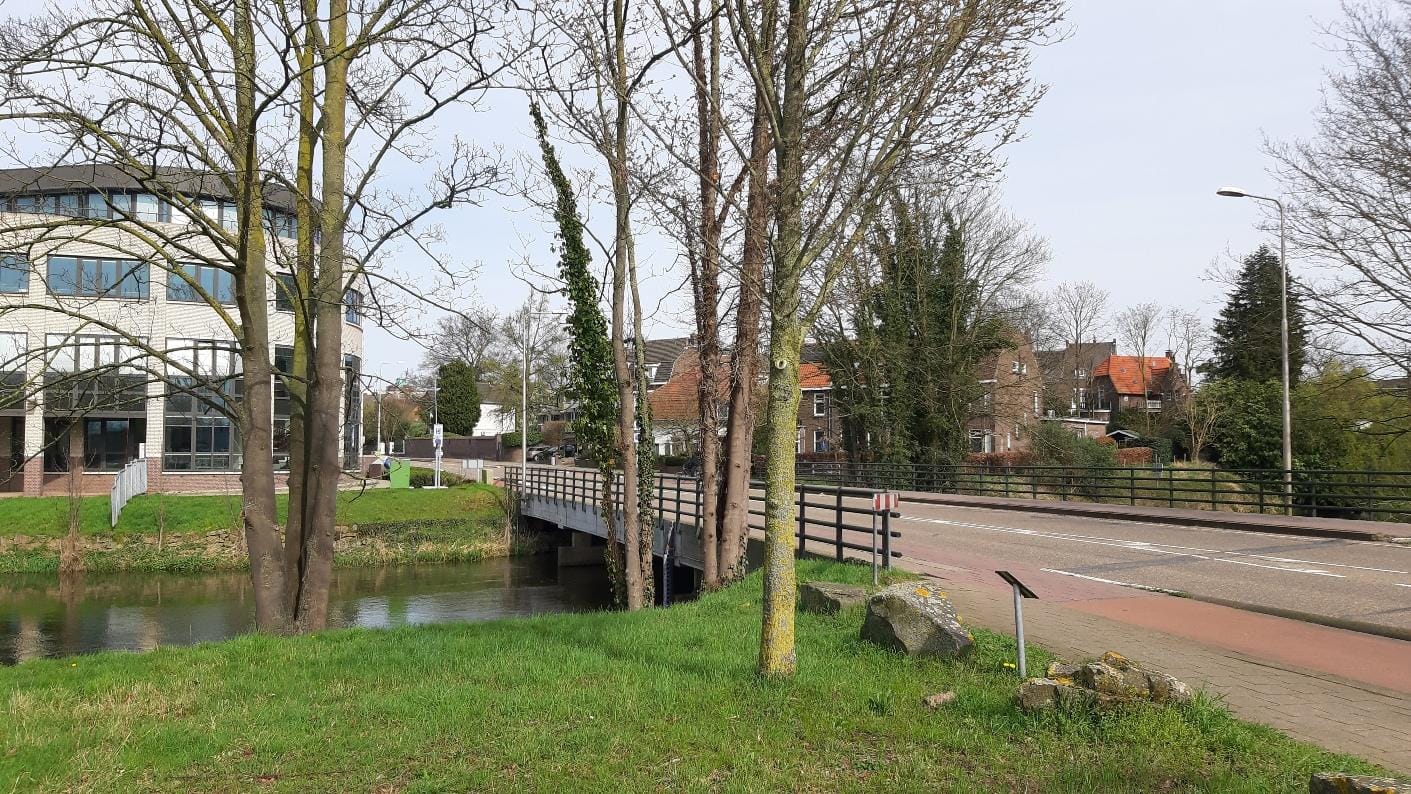
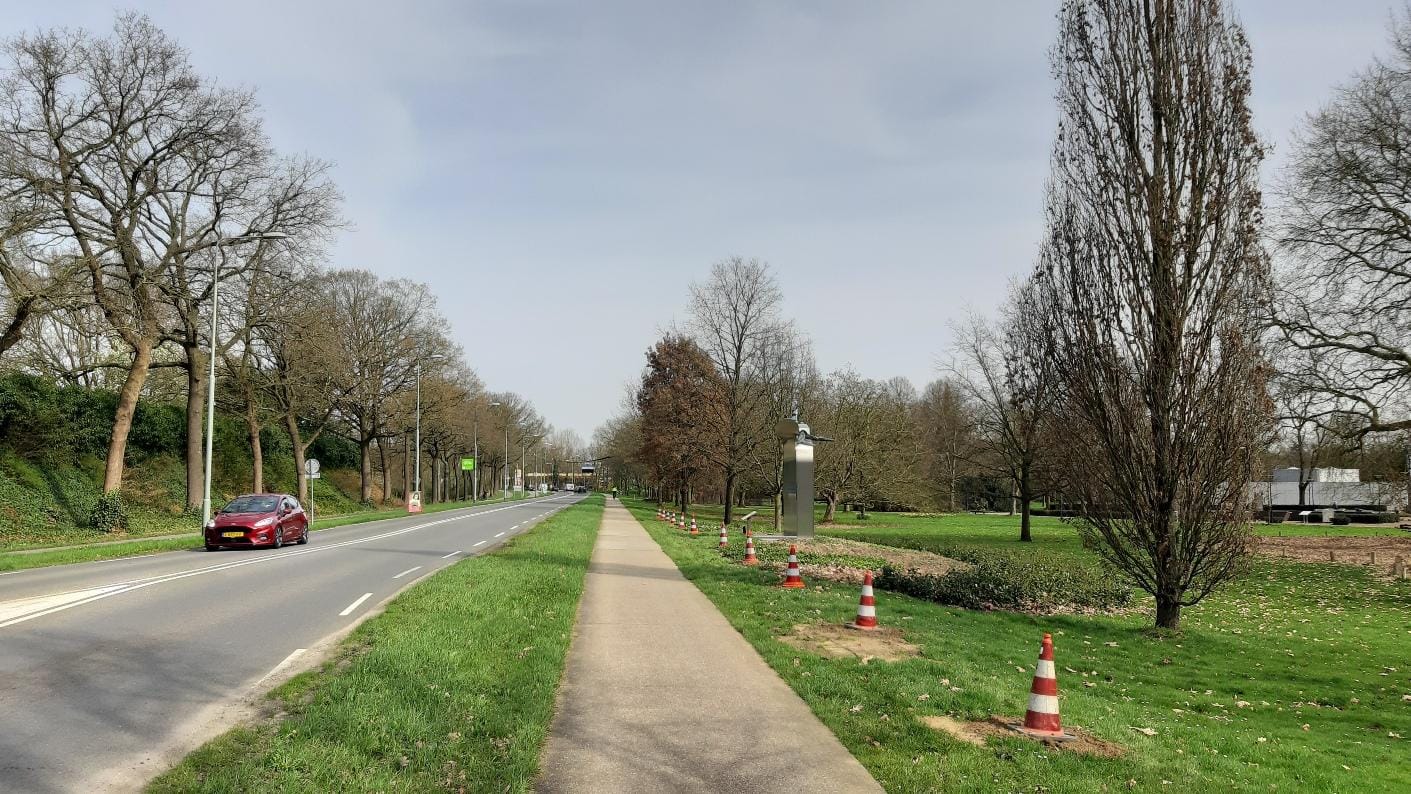
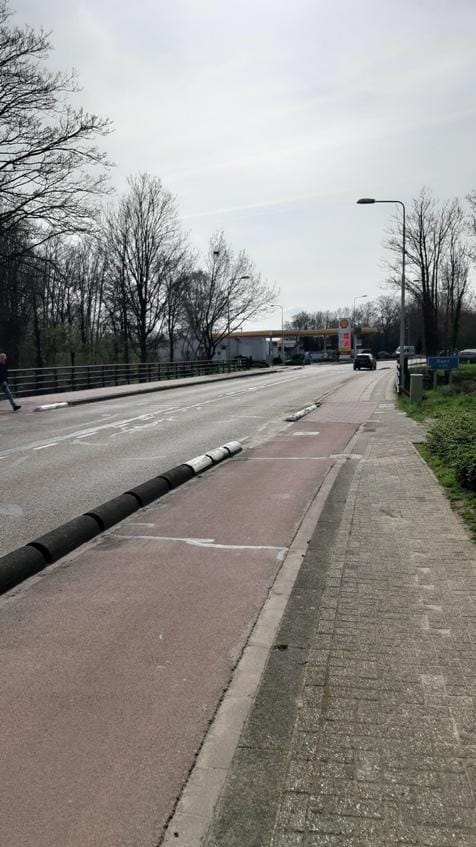
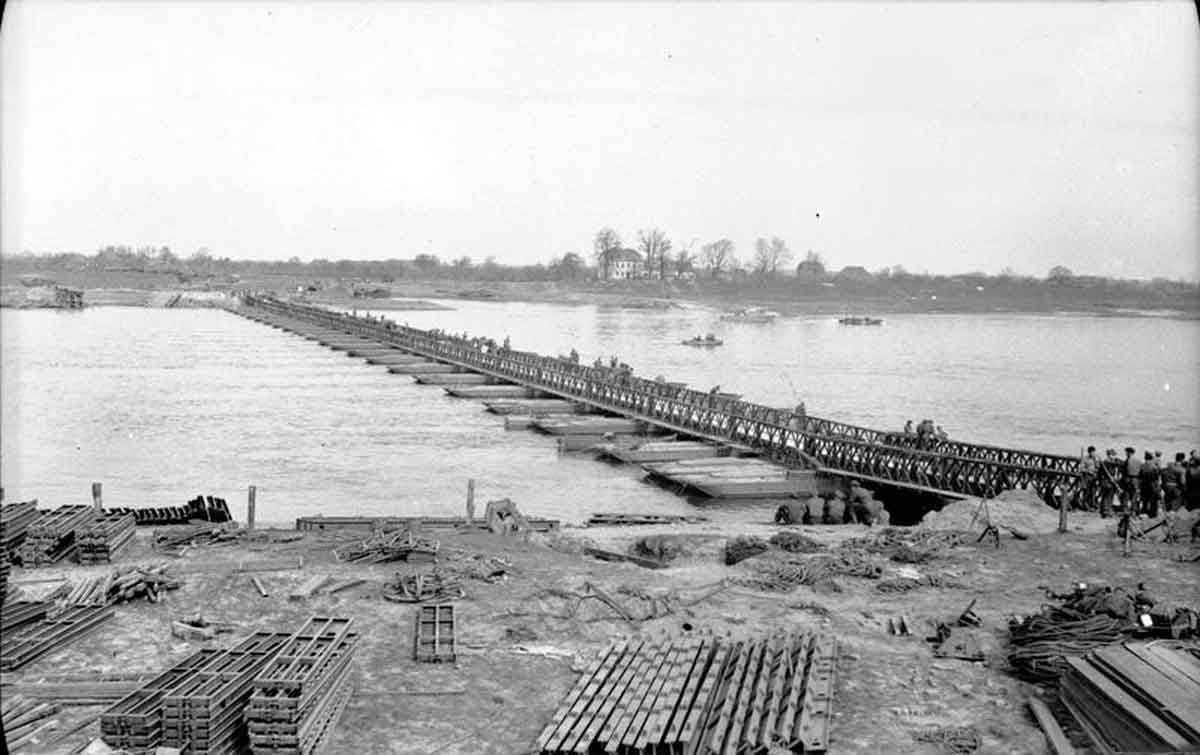
Note From Me. After my dad got back from the war. He described what he saw in Europe. Everywhere he went it smelled like death. "My father said to me, it's the big people who make wars, not the common people, they are the ones who get hurt." Charles Wilson
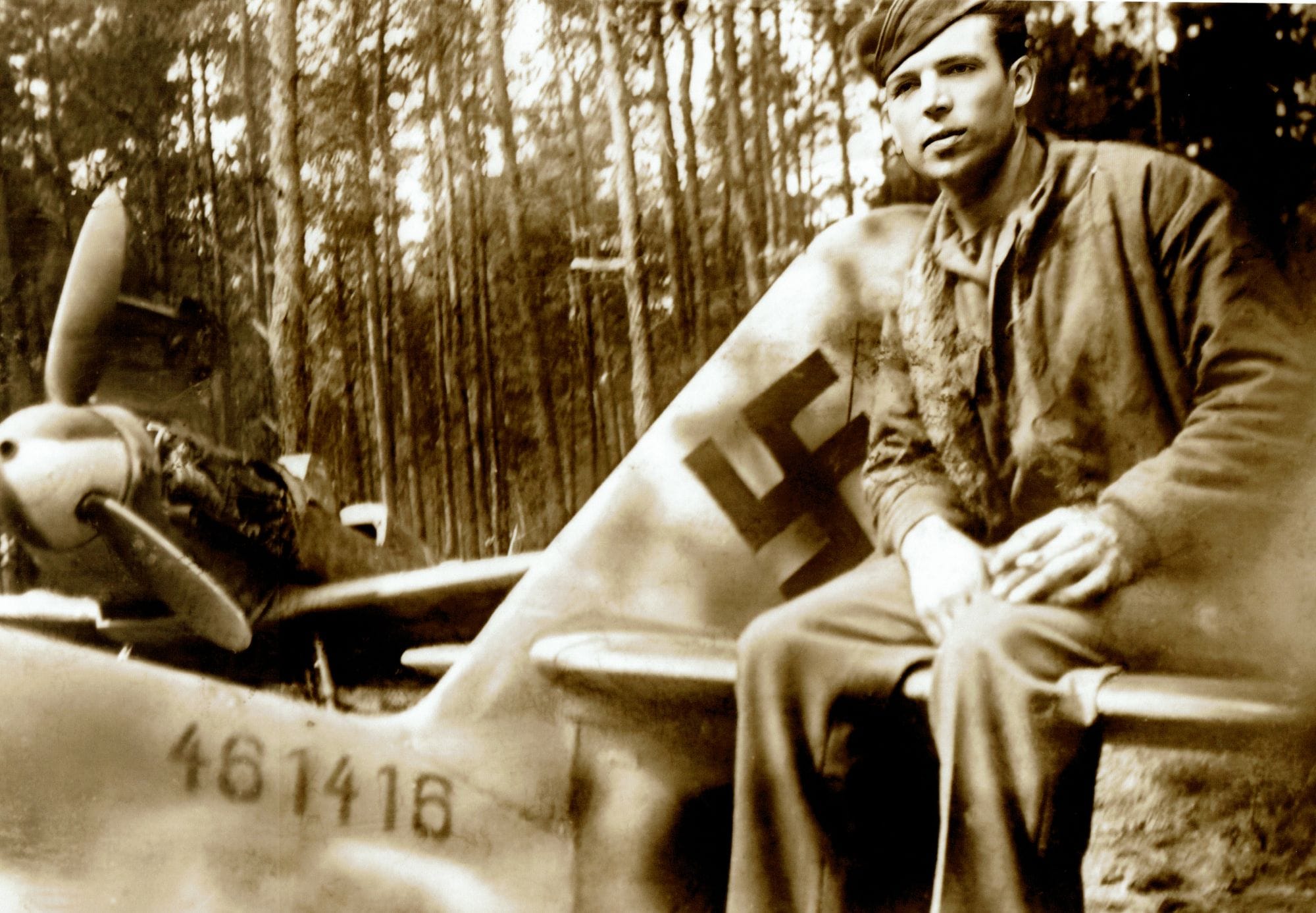
For operations on the Rhine, the battalion had Naval Task Unit No. 122.5.3, which had as its equipment 24 LCVPs, 24 LCMs, and 6 sea mules attached. A platoon of 25 ducks was also attached. Fifty-six prime movers with trailers to have the naval task unit's equipment, cranes, motor boats, and other different types of equipment were assigned to the 202nd also. "C" Company was attached to "E" Company of the 17th Engineer Armored Battalion.
With the training completed, another problem now faced the unit, transportation of the equipment to the Rhine River banks. The job was not as easy as it seemed. All appearances made it look as if the naval equipment would simply be loaded onto the prime movers' trailers and moved some forty miles to the front. The boats, mounted on trailers, formed a huge, heavy, bulky load that could not be taken around sharp corners, through narrow underpasses, or over Treadway bridges because of the trailers' multiple wheels. Therefore long out-of-the-way route, some eighty miles long, was forced into use. A crew of demolition men along with a D-7 angledozer proceeded to the convoy to clear the obstacles that were found on even the out-of-the-way route.
D-Day for the 9th Army's gigantic offensive was set for March 24th. H-Hour for the powerful assault on the Rhine was set at four in the morning. The battalion CP was moved forward to Ossenburg at H-Hour minus one. A forward CP was located on the banks of the famous river.
Before the attack itself started a deafening artillery barrage was unleashed on the Nazi positions. Men from the battalion were operating storm boats, which rushed the first wave of infantry across the water barrier.

Meanwhile, 12 LCVPs and 12 LCMs were switched to the 1148th Engineer Combat Group and three LCVPs and three LCMs were held in reserve. "B" Company, with enemy machine guns, mortar, and artillery fire sweeping their launching site, had three LCVPs launched by H plus 4. By H plus 5 1/2 the remaining six LCVPs were launched and all nine LCMs were launched and in operation at H plus 9. Five of the sea mules were also launched by "B" Company. While the sixth was being launched it was bogged down in heavy mud but was in operation later on.
Company "C", working with the Treadway bridge Company "E" of the 17th Armored Engineer Battalion, constructed two Treadway rafts before starting the bridge at 945. By 1600 hours the same day, the first truck crossed the Rhine about five kilometers south of Wesel over 1152 feet of M2 Treadway and 93 pneumatic floats, just six hours and fifteen minutes after construction began. This magnificent job established a world record in bridging operations of such magnitude.
Construction and operation of the Bailey rafts had been assigned to Company "A" and by 1700 hours on D-Day (March 24th) three rafts were completed and in operation. The rafts were assembled in the Rhine and floated downstream to approaches that were constructed by Company "A" while the rafts were being assembled. The rafts, pushed by storm boats, ferried tanks and vehicles across the Rhine until the bridges were completed.
Two battalions of field artillery had crossed "C" Company's bridge through the heavy smoke screens that shrouded the whole area ~ when misfortune struck a heavy blow. An LCM, a Bailey raft carrying a tank, and a sea mule had lost their way in the smoke screen and before they could be maneuvered away from the bridge the Rhine's swift current dashed them into the span and destroyed or damaged the middle sections of the bridge. The sea mule and LCM were finally pulled away from the structure itself but the Bailey raft was found impossible to move. In attempts to move it the tank it was ferrying was dumped from the raft's deck into the river. Charges of TNT were placed on ten of the bridge's damaged or destroyed center spans. This was the only way they could be removed quickly without causing too much delay. The spans were replaced and traffic resumed in a few hours.

The night after the assault crossing the Rhine, a small party set out to make a bridge reconnaissance at a point approximately eighteen miles east of the Rhine in the vicinity of Hiinxe, Germany. The mission was to measure the gap left by the demolition of two bridges, one over the Lippe Section Canal and one over the Lippe River just north of and parallel to the canal.
The party set out at 6 o'clock and proceeded west of Hiinxe to make the reconnaissance before dark. They were halted abruptly about two miles west of Hiinxe by sharp warnings from infantrymen and finally by enemy small arms fire. Pinned in the ditches along the road they could only watch and admire some beautifully executed tank-infantry teamwork dispose of the enemy resistance before them.
The infantry had met opposition in the form of a Jerry tank or pillbox supported by riflemen. They deployed in the field before the enemy position and called for fire from the MGs on their flanks into the scrub woods that hid the strongpoint. Ugly red tracers raked the underbrush and sought out of the position, finally marking it when they bounced off into the fading light of the day.
Wham; wham; and the earth shook as the tank supporting the infantry fired on the place marked by the bounding red tracers. The shells exploded on their objective and sent hot steel whining through the air. Wham; went the tankers again and all was quiet. The whole skirmish did not last more than two minutes but it seemed like hours to the reconnaissance men, who after they could safely stand up, decided that the bridge was too far behind the Jerry lines and that they would return in the morning.
The next day, a somewhat larger party, composed of Capt. Chase, Lt. Guidreau, S/Sgt. Kohus, Sgt. Keith and Pfc. Eldridge set out on the same mission.
The outskirts of Hiinxe were reached without mishap and the party contacted infantry reconnaissance patrols who warned them to proceed no further because no one knew how strong the Jerries were ahead of them.
Despite the warning, the reconnaissance patrol proceeded to the banks of the canal and successfully measured the first gap. This was done without drawing fire from the enemy, so the party began to proceed, under the leadership of First Lt. Guidreau, to the second bridge site, approximately 500 yards north of the canal.
Across the river and built up to the north bank was a scattering of about a dozen houses called Krudenberg. The road from Hiinxe passed over the canal, across the fields between the canal and the river, and then across the river and formed the main street of Krudenberg.
This road was meant to have been a line of resistance but the prepared foxholes alongside it were, thank the Lord, unoccupied.
Lt. Guidreau ordered the patrol to proceed by leap-frogging forward from hole to hole right up to the bridge. He, as the first man in the patrol, reached a two-man Jerry foxhole just at the end of the bridge and was joined there by Capt. Chase. They were approximately seventy yards from the houses on the opposite banks of the river. The other members of the party had occupied holes behind them.
The pop and whispers and crash of the first mortar shell was the first sign that they had been trapped. Small arms fire passed out of the buildings across the river, which in the States is termed a creek, at a very short range and cut down three men in the party. Capt. Chase, who had been hit, ordered the party to withdraw and did so himself amid a hail of bullets. He swam the Lippe Canal and miraculously escaped. This was approximately at 1000 hours.
Lt. Guidreau had been hit also and was unable to move from his foxhole nor was anyone able to help him because no skilled medics were available. S/Sgt. Kohus was not hit but dressed Pfc. Eldridge's wound and helped him out of one foxhole in an attempt to withdraw. Pfc. Eldridge was hit a second time during the attempt at withdrawal and S/Sgt. Kohus again dressed the wound, using his handkerchief. Both men were pinned in a one-man foxhole from 1000 hours to 1800 hours when they were rescued by members of the 17th A.B. Division after the paratroopers had knocked the Jerries out of Krudenberg.
Sgt. Keith, who was not hit, made a skillful escape and was entirely undetected by the Jerries when he bade them goodbye around noon. S/Sgt. Kohus and Pfc. Eldridge watched the paratroopers liquidate the opposition with grenades and automatic weapons. After the enemy was killed or captured S/Sgt. Kohus crossed the river and secured a paratroop medic who dressed the wounds of Lt. Guidreau and Pfc. Eldridge and called back by radio for their evacuation.
So closed another day of scares and thrills for the men who play around the front lines and wait for the law of averages to catch up with them, but three bridges were built as only the men of the 202nd could build them. The next day American armor streamed across them. The tankers, the inexperienced ones, called down to the hairy-eared engineers "Why don't you come up front and fight?" The engineers, well, the engineers never do anything but sweat and cuss and that's what they did.
Each letter company constructed a bridge; "A" an 84-foot Treadway, "B" a 60-foot Double-Single Bailey, and "C" a 130-foot Double-Double Bailey.
An additional route across both the canal and river was required, so the 202nd was assigned the task of constructing two more bridges. "Able" Company built the canal bridge which was a 72-foot Treadway. "Baker" Company threw 168 feet of treadway bridge across the Lippe River. "C" Company worked on the bridges approach roads.
Now with the work completed there, the battalion raced to Dorsten and opened up the blocked roads in the area. We were placed in close support of the 75th Infantry Division. Craters were filled, and Treadway bridges were removed and replaced with culverts. All types of obstacles were removed from the roads.
Near Henrichenburg, Germany, the battalion constructed a causeway across the Zweigkanal. It took 29,000 cubic yards of earth to cover the culvert pipes, which were placed to take care of the water flow in the canal.
Company "C" built a 220-foot TS Bailey Bridge over the same canal at a different site approximately 500 yards on the left flank of the causeway. This was a complicated job. It involved the construction of a 30-pier in the center of the span. This bridge and the causeway carried all of the division's traffic.
There was a growing danger of a German attempt to break out of the pocket.
So as a precaution, all the bridges in the area were prepared for demolition, and guards were placed on them. The German's attempt to break out of the pocket never came and the charges were removed.
"C" Company built the last bridge under combat conditions when they built a TS-TD-TS Bailey Bridge near Dortmund; as the bridge was completed the Ruhr pocket was collapsing. As the battle in the Ruhr ended the XVI Corps was declared Occupation Troops until V-E Day. The battalion moved to Reinburg during the third week in April and a week later they traveled to Arnsburg.
Here at Arnsburg "A" and "C" Companies constructed a fixed timber bridge each and "B" Company maintained and patrolled the roads in a 1500 square mile area. Then the great news came on May 12th. The war ended. All of the battalion (except "C" Company which was in Arnsburg) was in Iserlohn. This was a day to celebrate and everyone did their best even though they were in Germany. To be continued after the story about the 79th Infantry.
In the meantime, the 187th Engineer Combat Battalion was busy.
79TH INFANTRY DIVISION - OPERATION FLASHPOINT: RHINE CROSSING TRAINING
On March 8th,1945, the 79th Infantry Division was attached to the XVI Corps to prepare the crossing of the Rhine River. Although the river had not been reached yet at the time, XVI Corps had begun plans and preparations for the crossing.
As the Rhine is very large and deep men had to receive special training to cross this obstacle, the division with the 30th Infantry Division was assembled in the same training area for the purpose at Echt in Holland. Meuse or Maas* River would be their playing field.
The plan for the 79th provided for an assault crossing with the 313th Infantry Regiment on the right, which would have to take the towns of Walsum, Vierlinden, Overbruch and protect the right flank of the division along the line of the canal just south of Walsum. The 315th Infantry Regiment on the left was to take the wood of Wohnungswald, Dinslaken, continue the attack to the east to the high ground east of Letkampshof to protect the left flank of the division, along the canal north of Wohnungswald until uncovered by the advance of the 30th Infantry Division.
The last regiment of the 79th, 314th in reserve would cross the Rhine on orders, prepared either to pass through the 315th to seize the town of Dinslaken or to pass through both regiments to secure the high ground east of Hiesfeld Dorf or to assist either regiment in reducing close-in defenses.
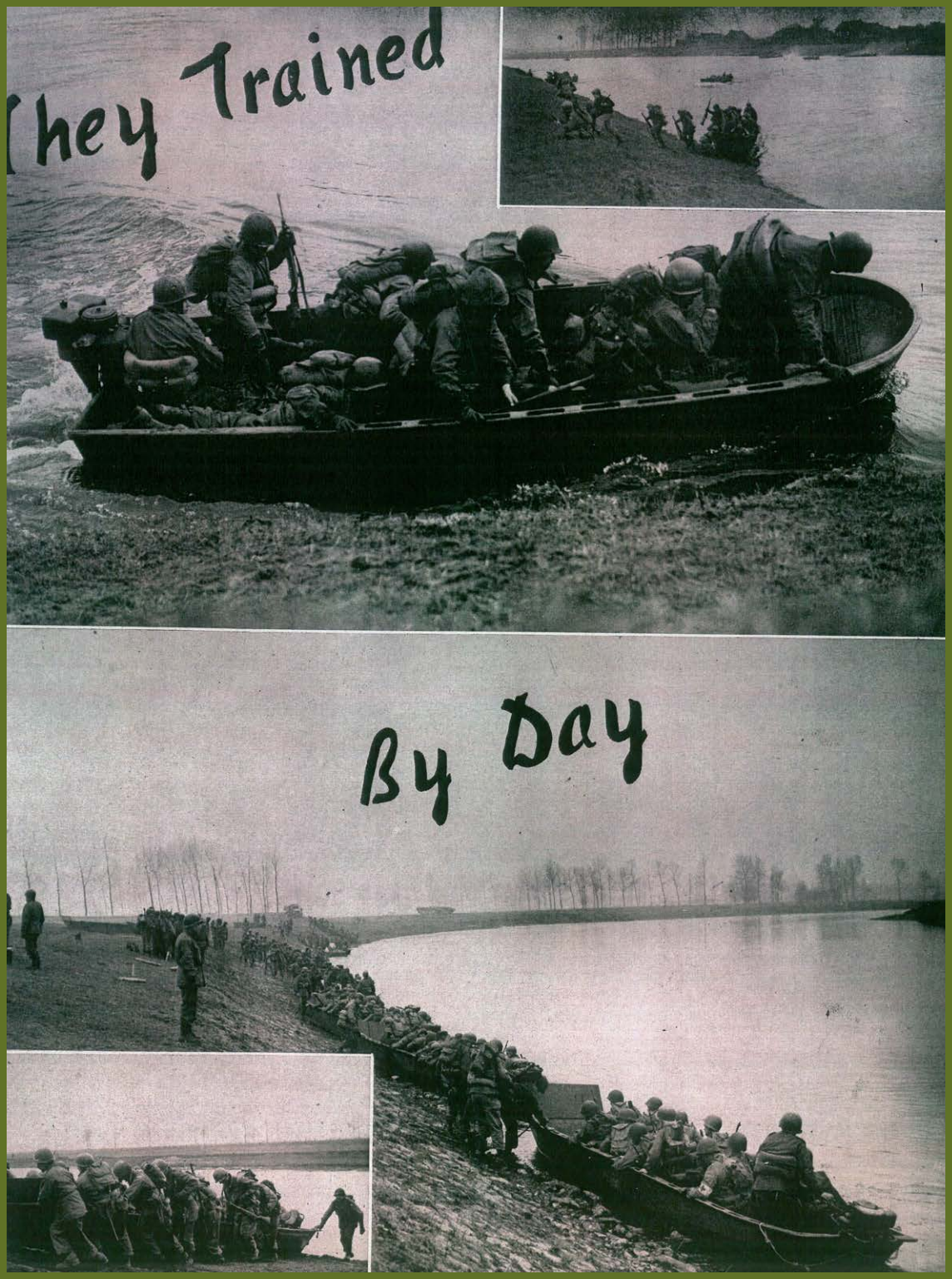
From March 14th to the 19th, 1945, intensive training took place along the Meuse River. The purpose was to school thoroughly assault battalions of each regiment, first during daylight and then during darkness while the other battalions were familiarizing and practicing with the Engineer equipment. More so, the main objective of this training attempted to anticipate all possible problems that the 79th could have met during the real crossing of the Rhine and further. This is why all units participating in that river crossing, worked all together during the training.
Note: The 187th Engineer Combat Battalion supported the 313th Infantry Regiment and the 149th Engineer Combat Battalion the 315th.
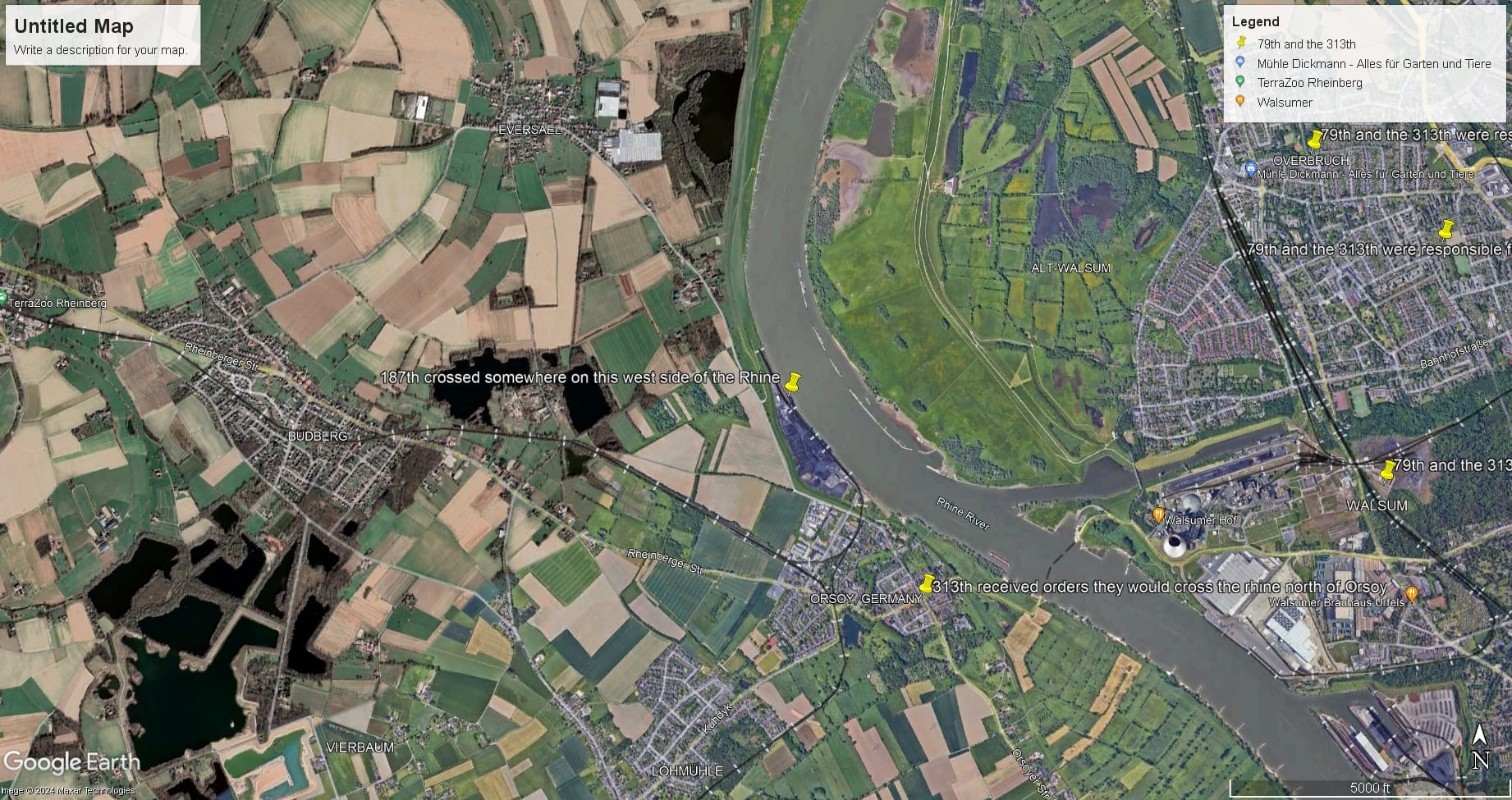
Men were assigned to a particular numbered assault or storm boats and Engineers who were to operate that particular boat were designated. Everything was planned in detail, those boat groups were informed of which wave they would be part of and when they would cross the river, and who would be on the right and left. The 2nd Battalion of the 313th and 315th Infantry Regiments were chosen as assault battalions for the river crossing and trained during night and day for approximately ten days.
The operation, and training of the crossing were divided into phases as follows:
- Training
- Reconnaissance
- Intelligence
- Planning
- Execution
- Follow-up
According to the 313th's officers, the greatest difficulty concerning reconnaissance was the fact that there were 75 Miles between the training site and the crossing site. Roads were jammed because of traffic making the trip a three-hour run each way.
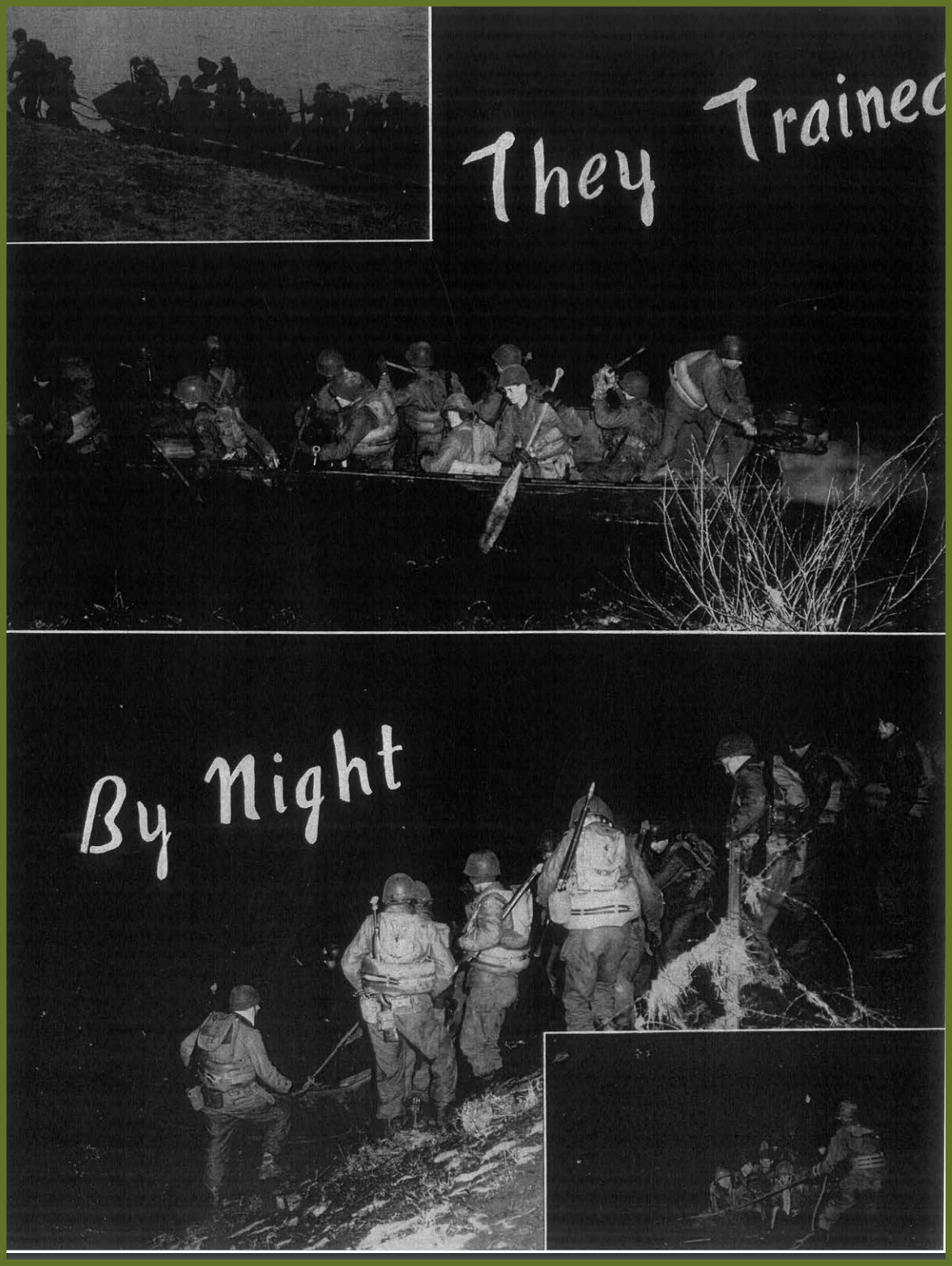
Coupled with the river crossing training, was also the ground attack training. Both regiments were instructed where their crossing sites were going to be and which were their objectives. Planning for the attack and capture of those objectives was carried on in as detailed a manner as the training for the river crossing. To aid in the operation, distribution, and study of aerial photographs, town plans, intelligence information, plaster terrain casts, and any other available aids that would help the officers and men in figuring out tactical situations and chance problems that might be expected to be met in their attack.
During the training and the main operation, all of the following units were attached to the three regiments:
313th Infantry Regiment:
- “A” Company of the 304th Engineer Battalion.
- “A” Company of the 304th Medical Battalion.
- “C” Company of the 813th Tank Destroyer Battalion.
- “A” Company of the 717th Tank Battalion.
- “A” Company of the 89th Chemical Mortar Battalion (4.2mm mortar) attached one platoon of “B” Company initially.
- “B” Company of the 809th Tank Destroyer Battalion.
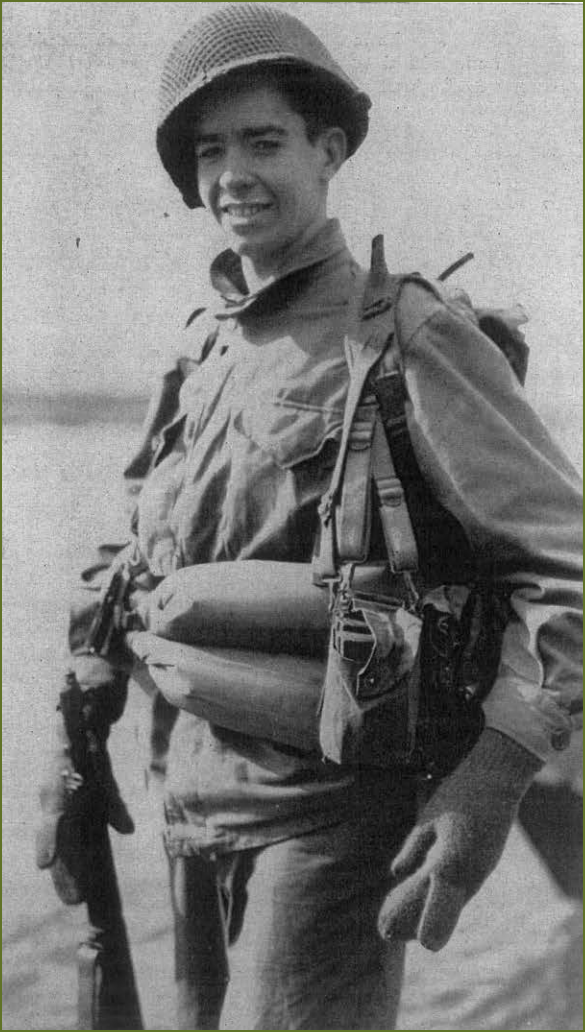
315th Infantry Regiment:
- “C” Company of the 304th Engineer Battalion.
- “C” Company of the 304th Medical Battalion.
- “A” Company of the 813th Tank Destroyer Battalion.
- “C” Company of the 717th Tank Battalion.
- “C” company of the 89th Chemical Mortar Battalion (4.2mm Mortar) attached “B” Company (One platoon)
- “A” Company of the 309th Tank Destroyer Battalion. (Reverts to battalion control when fire is masked)
314th Infantry Regiment:
- “B” Company of the 304th Medical Battalion.
- “B” Company of the 717th Tank Battalion.
- “B” Company of the 89th Chemical Mortar Battalion (4,2 Mortar) – One platoon attached initially to “C” Company - One platoon attached initially to “A” Company)
BOAT LOADING PLAN
Composition of the 2nd Battalion of the 313th Infantry Regiment (Assault Battalion)
FIRST WAVE
Boat N° 1 – Maintenance Platoon of “H” Company (16 men) and 1st Platoon of “E” Company (16 men) – Boat M-2.
- Boat N°2 – 1st Platoon of “E” Company (16 men) – Boat M-2.
- Boat N°3 – Machine gun section of “E” Company – 1st Platoon of “E” Company (15 men) – Boat M-2.
- Boat N°4 – 1st Section of 1st Platoon of “H” Company (14 men) – Boat M-2.
- Boat N°5 – Headquarters of “E” Company (7 men) – Mortar Section of “E” Company (8 men) – Weapon Platoon Headquarters of “E” Company (1 men) – Boat M-2.
- Boat N°6 – 2nd Platoon of “E” Company (15 men) Boat M-2.
- Boat N°7 – 2nd Platoon of “E” Company (8 men) – Machine gun section of “E” Company (7 men) – 1st Platoon of “H” Company (1 man) – Boat M-2.
- Boat N°8 – 2nd Platoon of “E” Company (15 men) – Boat M-2.
- Boat N°9 – Headquarters of “E” Company (7 men) – Mortar Section of “E” Company (8 men) – Weapon Platoon of the Headquarters of “E” Company (1 man) – Boat M-2.
- Boat N°10: 2nd Section of 1st Platoon of “H” Company (14 men) – Boat M-2.
- Boat N°11: 3rd Platoon of “E” Company (15 men) – Boat M-2.
- Boat N°12: 3rd Platoon of “E” Company (11 men) – Machine gun section of “E” Company (4 men) – Boat M-2.
- Boat N°13: 3rd Platoon of “E” Company – (15 men) – Boat M-2.
- Boat N°14: Observation Point Group #1 (15 men) – Boat M-2.
- Boat N°15: Company Headquarters Observation Group (6 men) – Storm Boat.
- Boat N°16: Liaison Group (7 men) – Storm Boat.
- Boat N°17: Observation Group #2 – (15 men) – Boat M-2.
- Boat N°18: 1st Platoon of “F” Company (15 men) – Boat M-2.
- Boat N°19: 1st Platoon of “F” Company (10 men) – Machine gun section of “F” Company (4 men) – Tank Destroyer Reconnaissance party (2 men) – Boat M-2.
- Boat N°20: 1st Platoon of “F” Company (14 men) – Mortar Platoon of “H” Company (2 men) – Boat M-2.
- Boat N°21: 1st Section of 2nd Platoon of “F” Company (14 men) – Boat M-2.
- Boat N°22: Headquarters of “F” Company (7 men) – Mortar section (8 men) – Weapon Platoon of Headquarters (1 men) – Boat M-2.
- Boat N°23: 2nd Platoon of “F” Company (13 men) – 2nd Platoon of “H” Company (1 men) – Boat M-2.
- Boat N°24: 2nd Platoon of “F” Company (8 men) – Machine gun section of “F” Company (8 men) – 2nd Platoon of “H” Company (1 man) – Boat M-2.
- Boat N°25: 2nd Platoon of “F” Company (12 men) – 2nd Platoon of “H” Company (2 men) – Boat M-2.
- Boat N°26: 2nd Section of the 2nd Platoon of “H” Company (14 men) – Boat M-2.
- Boat N°27: Headquarters of “F” Company (7 men)- Mortar Section of “F” Company (8 men) – Boat M-2.
- Boat N°28: 3rd Platoon of “F” Company (14 men) – Boat M-2.
- Boat N°29: 3rd Platoon of “F” Company (9 men) – Machine gun section of “F” Company (4 men)
- Boat N°30: 3rd Platoon of “F” Company (13 men) – 2nd Platoon of “H” Company (1 man) – Boat M-2.
9th Army Story Continues for above.
As May closed the entire unit was working and living in and near Iserlohn. Here they repaired and improved displaced persons' camps, made reconnaissance of the area for materials of value to the army, collected the material and turned it into dumps, etc.
On the 2nd of June, the battalion pulled out of Germany and proceeded to Camp Philip Morris near La Havre, France. They were to go home but the orders were changed and there they stayed at the Tent City.
No one realized now that the end was so near ~ but it was. Early in July orders came and the unit was split wide open. On July 5th, everyone with less than 85 points toward discharge left the outfit and those with a score over that mark stayed. There were very few left in the 202nd. Men arrived from the 38th Engineer General Service Regiment to fill up the vacancies. They were all high pointers. The majority of men leaving the 202nd traveled to Rouen, France, where they joined the 38th Engineer General Service Regiment.
The 202nd was still a unit but its heart was cut out. The days that they had spent together were a memory. They were all looking forward to civilian life sometimes and although most men didn't care for army life at all there was one sure thing. They will always look back and remember, yes, remember the Army and the 202nd. Remember the eight nations they passed through and the campaigns they were through. But what the hell ~ it's all over now.
Another point of view expresses the crossing of the Rhine River in Late March.
Operation Flashpoint
'Flashpoint' was a US operation by Lieutenant General William H. Simpson’s US 9th Army within the 'Plunder' offensive of Field Marshal Sir Bernard Montgomery’s Allied 21st Army Group (24/28 March 1945).
Designed as the right flank of the Allied drive to secure a northern bridgehead over the Rhine River, in which the left-hand elements were 'Turnscrew', 'Widgeon' and 'Torchlight' by Lieutenant General Sir Miles Dempsey’s British 2nd Army, 'Flashpoint' was entrusted to Major General John B. Anderson’s XVI Corps, which was tasked with pushing Major General Leland S. Hobbs’s 30th Division across the river between Wesel and Mollen in the northern sector of the corps' front, and Major General Ira T. Wyche’s 79th Division across the river between Mollen and Walsum in the southern half of the corps' front.
In addition to the XVI Corps, Simpson’s 9th Army also included Major General Alvan C. Gillem’s XIII Corps and Major General Raymond S. MacLain’s XIX Corps with a total of six divisions between them. Simpson ordered the XIII Corps to remain on the defensive along the Rhine River to the south of the crossing sites selected for the XVI Corps, while the XIX Corps assembled for early commitment in the bridgehead.
With five divisions, the XVI Corps was somewhat larger than a normal corps and was further strengthened with supporting units. In addition to its organic artillery under Brigadier General Charles C. Brown, the corps had been supplemented by Brigadier General John F. Uncle's 34th Field Artillery Brigade with 13 battalions of medium, heavy, and super heavy pieces of artillery, and the XIX Corps' artillery headquarters, under Brigadier General George D. Shea, with 11 battalions of artillery. Also attached were a tank destroyer group with six battalions, six separate tank battalions, three engineer combat groups, two anti-aircraft artillery groups, one smoke-generator battalion, one battalion with 4.2-in (107-mm) heavy mortars, and many other smaller units, including a naval contingent for the assault crossing. The XVI Corps therefore amounted to some 120,000 men, making it more an army than a corps, supported by 54 battalions of field artillery. Artillery units of the XIII Corps, as well as one of that corps' infantry divisions, were to participate in the preparatory fire and to answer calls for supporting fire as needed.
The 9th Army’s normal air support was Brigadier General Richard E. Nugent’s XXIX Tactical Air Command. This joined other Allied air units in the interdiction program before the assault crossing of the Rhine River and was to expend part of its effort on 24 March in support of the 'Varsity' airborne assault. Even so, the XXIX Tactical Air Command had sufficient aircraft for the provision of armed reconnaissance in support of the 9th Army and to assign a fighter-bomber group to work directly with each of the two infantry divisions that were to deliver the assault.
On the eastern side of the Rhine River, the German defense of the length of about 8 miles (13 km) of front scheduled for assault by the XVI Corps was divided between two corps of General Alfred Schlemm’s 1st Fallschirmarmee within General Oberst Johannes Blaskowitz’s Heeresgruppe 'H'. General Erich Straube’s LXXXVI Corps had the primary task of holding Wesel. Still, they were also responsible for the sector between the Lippe River to a point on the Rhine River to the south-west of Dinslaken, and here General Major Bernhard Klosterkemper’s 180th Division would face the 30th Division and part of the 79th Division. The 1st Fallschirmarmee's weakest component was General Erich Abraham’s LXIII Corps, which had the task of holding the remaining 2 miles (3.2 km) as well as additional frontage as far to the south as the army group boundary in line with the Ruhr river to the south of Duisburg. The northernmost unit of Abraham’s corps, General Leutnant Walter Steinmüller’s makeshift Division 'Hamburg', would face part of the 79th Division. In contrast, the southern portion of the corps' front was held by General Lieutenant Walter Lackner’s 2nd Fallschirmjäger division.
A three-quarter moon lit the landscape and a west wind blew a sustained smoke screen toward the Germans as the US engineers and infantrymen began to move their assault craft and boats to the water’s edge soon after 24.00 on 24/25 March. At 01.00 the 2,070 pieces of artillery available for the support of the XVI Corps opened fire. Every minute for one hour more than 1,000 projectiles ranging in weight from 25 to 325 lb (11.3 to 147.4 kg) they were landed on the German-held side of the Rhine River. During this hour-long preparation, the artillery fired a total of 65,261 rounds. At the same time, 1,500 heavy bombers were attacking a dozen airfields within range of the crossing sites.
Even as this huge blow on the Germans was being delivered, the US engineers and infantry boarded their assault craft and boats, and other engineers moved large pontoons close to the water in preparation for the construction of bridges the moment the western bank was free of the first assault waves.
All three regiments of the 30th Division were used in the assault phase of 'Flashpoint': the 119th Infantry was on the left just to the south-east of the village of Büderich close to the confluence of the Lippe River with the Rhine River; the 117th Infantry was in the center at the village of Wallach; and the 120th Infantry was on the right some 2 miles (3.2 km) to the south-east near a large bend in the river just to the north-east of Rheinberg. Each of the three regiments used one of its battalions in the assault. Each assault battalion was organized as four waves with a two-minute interval between waves. Every battalion had 54 faster storm boats each carrying seven men as well as its crew of two, and 30 slower double assault boats each carrying 14 men as well as its crew of three. Tracer rounds fired by machine guns guided the first wave, and coloured aircraft landing lights were used as beacons for the following waves.
As the men awaited the signal to push out into the river, only an occasional German mortar bomb fell, so it was only after the boats had moved out onto the river, under cover of grey smoke, that the German projectiles found their first targets: two of the 119th Infantry’s storm boats were hit, one man being killed and three others wounded. The boats headed for the eastern bank of the Rhine river as quickly as they could, and in only a few minutes the first boats ran on the eastern bank and their passengers ran toward the big dike edging the river. Only at one point, where men of Company G of the 120th Infantry landed a few hundred yards from their planned crossing site, was there German fire, which the Americans silenced swiftly and without loss to themselves. Although the artillery had scored few hits on the dike, the German defenders were blinded by the smoke and thoroughly cowed by the shelling.
There was no greater German opposition to the arrival of the following assault waves, which normally could have been expected to attract heavier shelling. The artillery preparation had silenced at least some German guns and seemingly severed all telephone wires and, as only a few forward observers had radio equipment, they had no way to call for fire. Dawn arrived before the first German shelling in appreciable amounts struck the crossing sites. There could be no question from the first that the 30th Division had achieved a notably successful Rhine crossing operation.
Within two hours the advancing US forces had reached the first built-up areas on the eastern side of the Rhine River, all three assault regiments had at least two battalions across the river, and a platoon of Sherman DD amphibious tanks had arrived to help the regiment in the center.
In the assault crossing total casualties among all three regiments were even less than those of the single regiment which had made the 'Banknote' (ii) surprise crossing of Lieutenant General George S. Patton’s US 3rd Army some 28 hours earlier at Oppenheim.
The British had crossed with similar ease near Xanten in 'Plunder' and had quickly pushed 1,000 yards (915 m) beyond the Rhine.
It remained for the 79th Division to execute the last amphibious phase of the assault, to cross the Rhine River at 03.00 at points to the east and southeast of Rheinberg. It was because of the southeast curve of the Rhine River that the 79th Division’s attack was delivered one hour later than that of the 30th Division, thus avoiding the risk of exposed inner flanks for both divisions. For the Germans opposite the 79th Division, however, it meant two hours of artillery punishment instead of one. The 79th Division’s commander chose to make the crossing in his formation’s sector with two regiments side-by-side, each regiment using one battalion in the assault. Unlike the 30th Division, which used only storm boats for the first wave, reserving the slower assault boats for subsequent crossings, the assault units of the 79th Division mixed the two types, overcoming the two types' difference in speed by sending the slower assault boats off slightly ahead of the faster storm boats.
Although the hour’s delay provided the 79th Division with more artillery preparation, it also added some confusion as, by 03.00, the west wind had decreased and the combination of natural fog and man-made smoke then clung to the surface of the water and both of the river’s banks.
Except for sporadic small-arms fire, the German opposition to the 79th Division was no more effective than that to the 30th Division; but the difficulty of holding course in the fog and smoke scattered and intermingled the units on the eastern bank. The men in some boats lost direction altogether and returned western bank. Yet in the absence of any major German reaction, the confusion was short-lived. Within 45 minutes both assault battalions had assembled and begun to move out to the east. Like the men of the 30th Division, those of the 79th Division felt that much of the assault crossing’s success was attributable to the artillery preparation, which lifted its fire only after the first boats were three-quarters of the way across the river.
Well before the advent of dawn, two battalions were ashore in each regimental sector, and again there could be no question of the extent of the success. The two divisions had crossed one of the most imposing water obstacles in Western Europe at a cost of just 31 casualties.
By the end of 24 March the XVI Corps had crossed the Rhine in five places, the 30th and 79th Divisions then securing a consolidated bridgehead between Wesel and Dinslaken so that the army’s backup formations (Major General John M. Devine’s 8th Armored Division, Major General Paul W. Baade’s 35th Division and Major General Ray E. Porter’s 75th Division) could move up for the exploitation, which reached Dorsten by 28 March.
Thanks to Footsteps in France for help with the crossing of the Rhine River information.
Welcome to the new members of the newsletter. It's always a pleasure to see new people sign up. If you have some information on the battalion, please reach out. No matter how insignificant you may think the information may be, it might lead someone to a new avenue for research.
Contact us at the187thengcobn@aol.com
You can sign up for more information at https://187th-engineering-combat-battalion.ghost.io/ghost/#/site
If you are a WWII vet or a family member and wish to include your history or the history of a loved one, I'd love to hear from you. My main emphasis is to acquire the history of the men who served.
YOU CAN CATCH UP ON THE JOURNEY OF THE 187TH BY SEARCHING FOR THESE PAST POSTINGS ON THE INTERNET.
